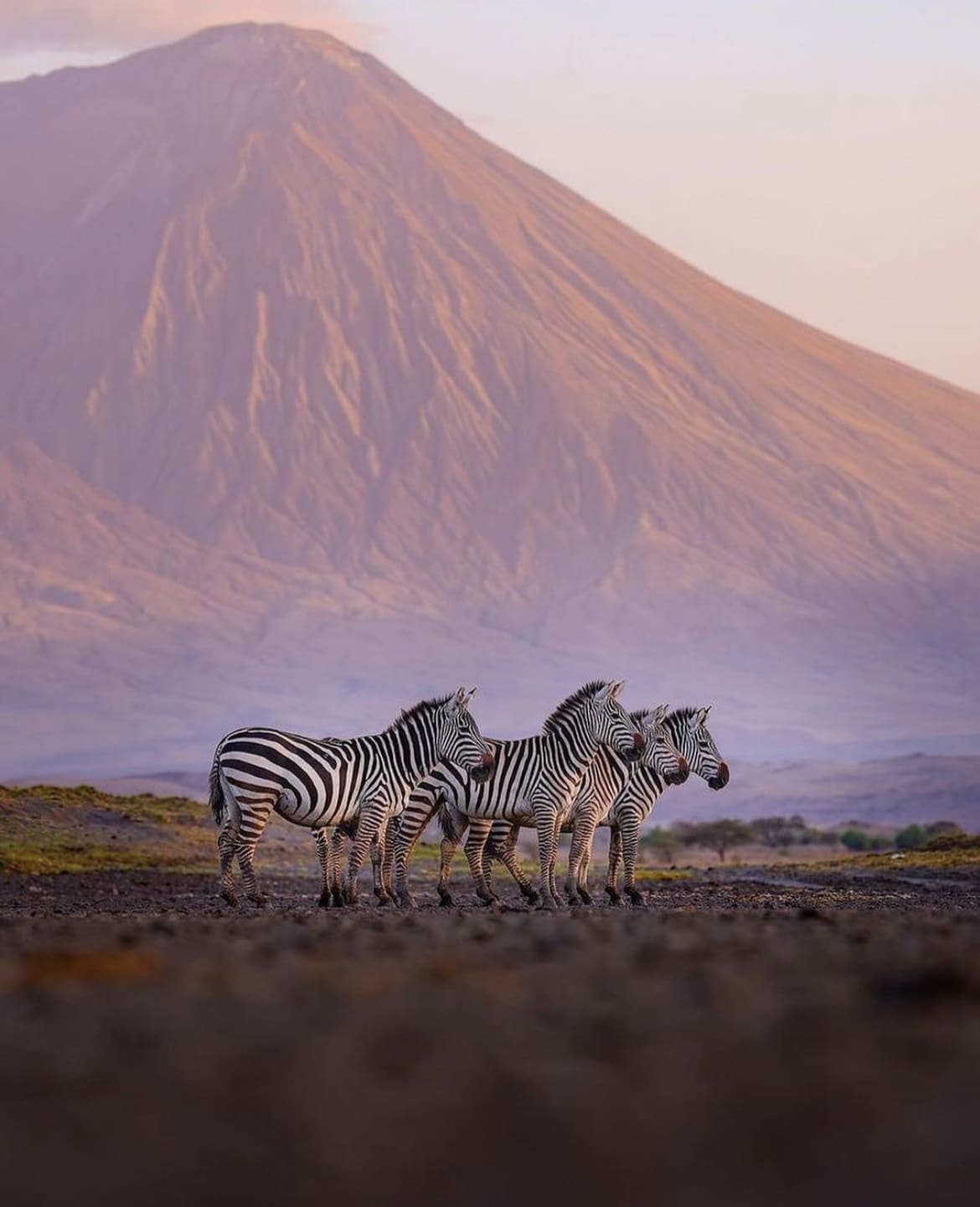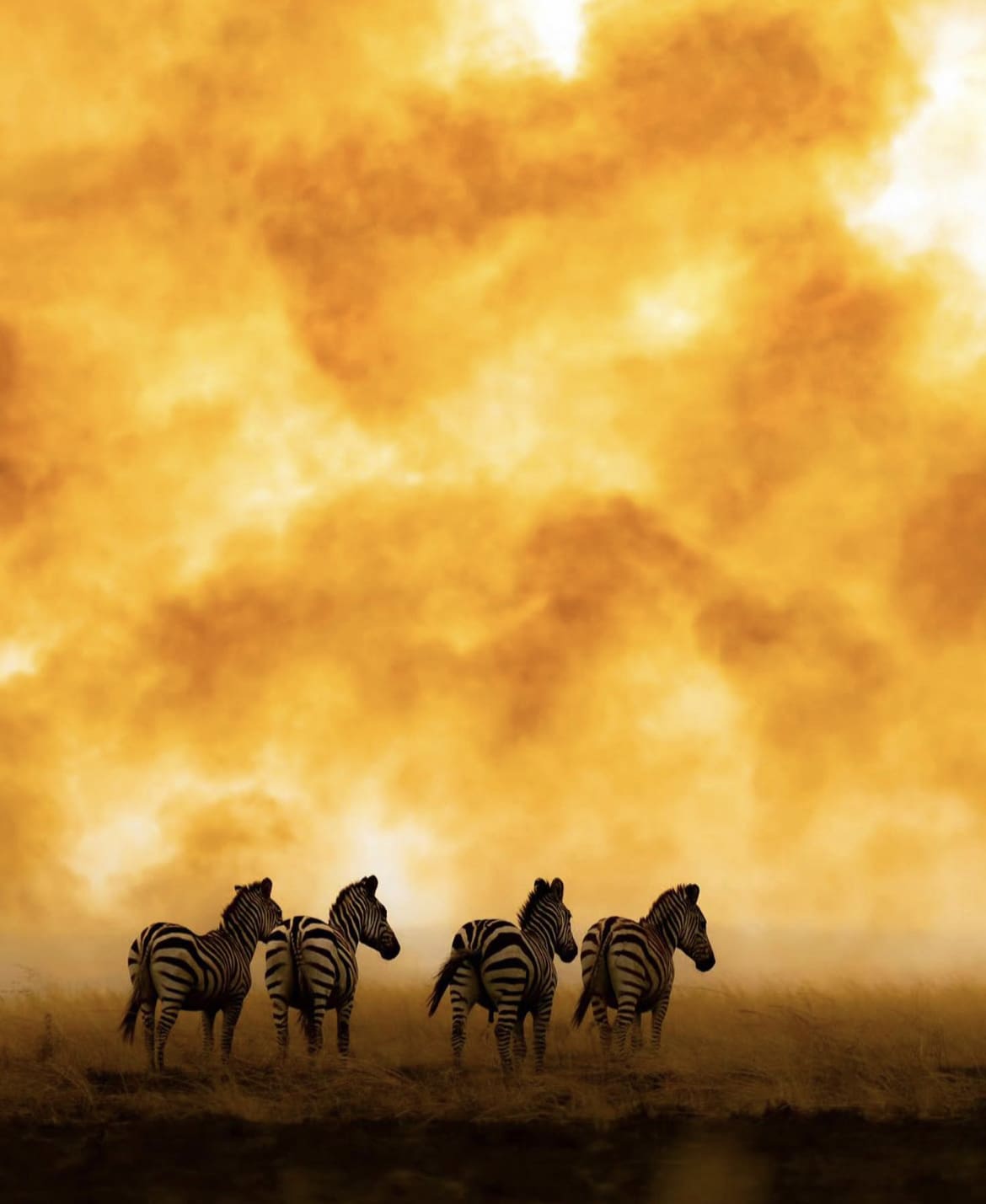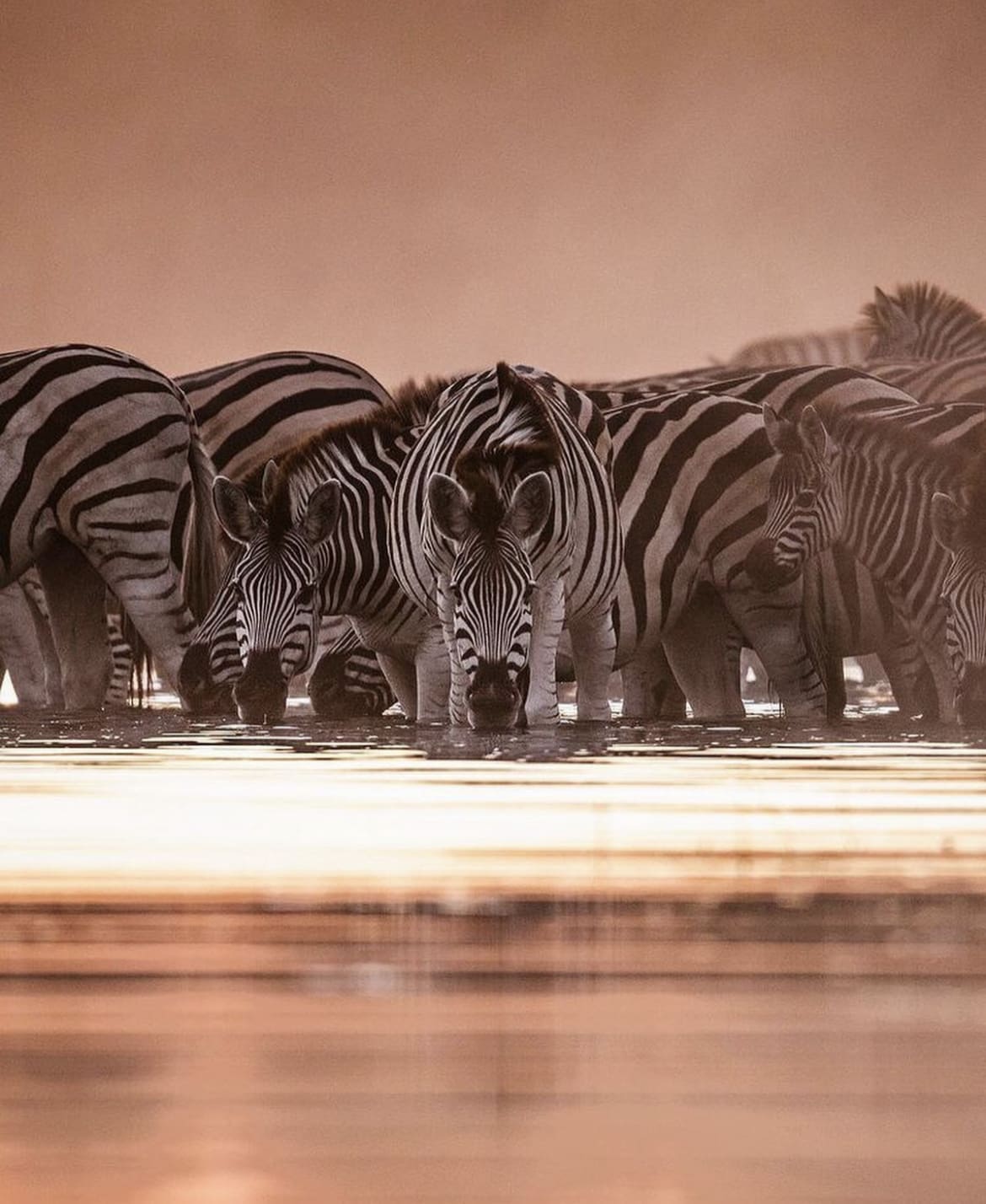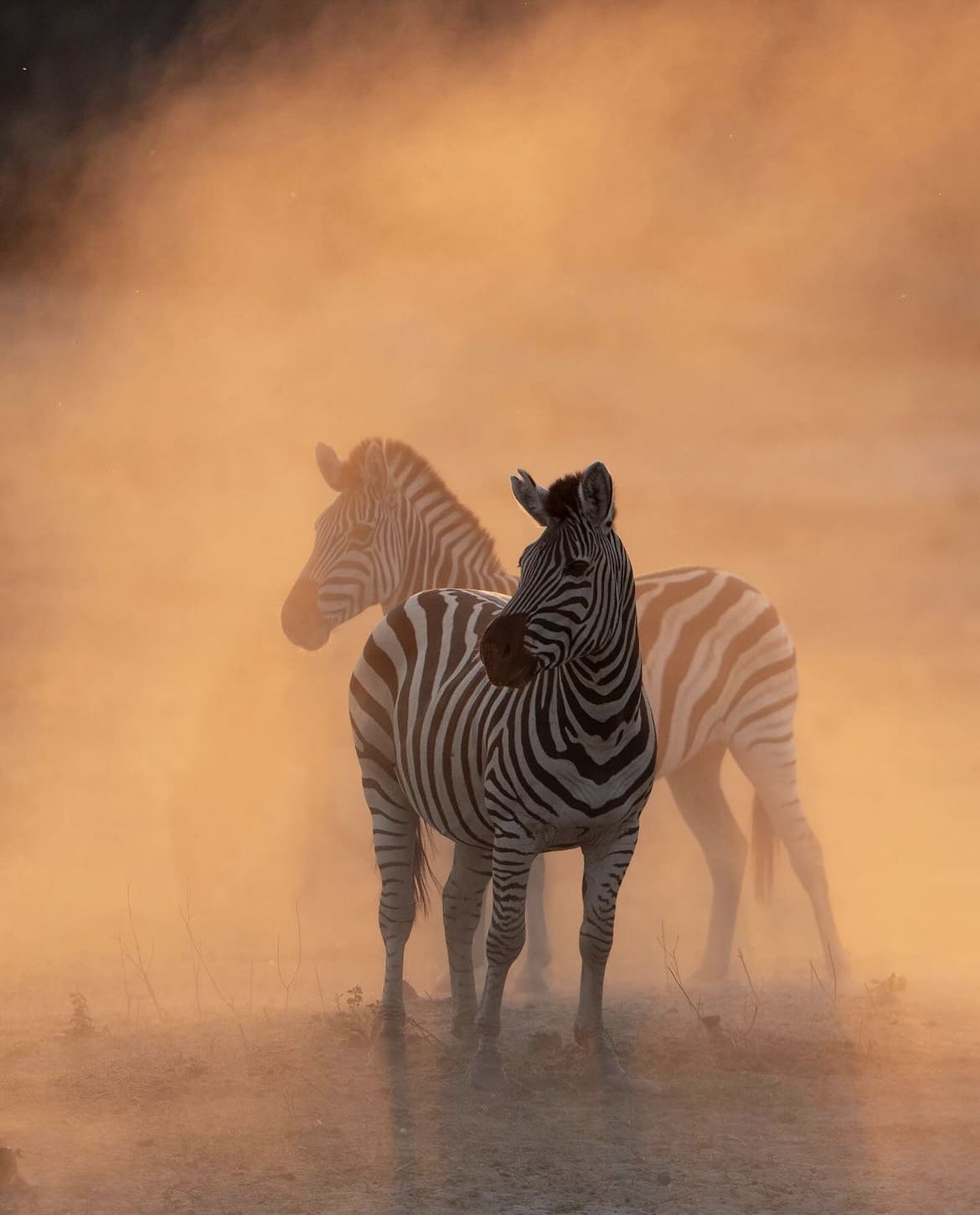Dive into the black-and-white world of the zebra, Africa’s striped marvel, and uncover a story woven with intrigue, survival, and a dash of mystery. Far more than just equine beauties adorned with nature’s most striking patterns, zebras captivate the imagination with their unique identities, complex social networks, and an untamed spirit that defies the constraints of the savannah.
As we debunk myths and discover fascinating facts, prepare to be enthralled by the true essence of these iconic creatures. From their unparalleled memory to their vocal antics and impressive defense strategies, zebras are not merely survivors; they are the vibrant protagonists in the rich tapestry of African wildlife.
What is the Zebra
Alright, let’s get this straight from the get-go: when you think of Africa, zebras probably pop up in your mind right alongside lions, elephants, and those sunset shots that scream “safari vibes.”
But what’s the deal with these stripey horses? They’re not just there to make the savannah look pretty or to adorn your favorite brand of pajamas. Zebras are the epitome of African wilderness, embodying the mystery and wildness of a continent that refuses to be tamed. These creatures are more than meets the eye, with a lineage that’s as complex as their patterns and a lifestyle that screams “I was born to run wild.”

Types of Zebra
First off, let’s break down the zebra family. You’ve got three main types: the Plains zebra, the Grévy’s zebra, and the Mountain zebra. Each of them boasts a unique style of stripes that could put the best fashion designers to shame.
The Plains zebra? Think of it as the everyman’s zebra, the one you’re likely to bump into on a safari. The Grévy’s? It’s the rare, more exclusive model, with thinner lines that scream haute couture. And the Mountain zebra, with its rugged look, is the zebra that’s not afraid to get its hooves dirty.
Understanding these types can feel like decoding a complex subculture, but once you get it, you’re practically a zebra insider.
What do Plains Zebras look like
Now, let’s zoom in on the Plains zebra, the most social of the bunch.
Picture this: a sturdy, well-built horse, but cooler, because it’s wearing stripes that no two can claim are the same. It’s like each zebra got a custom paint job. Their stripes cover them head to toe, or should I say, nose to tail, including their beautiful manes that stand up straight like the bristles of a brush.
These aren’t just any stripes; they’re a masterpiece of nature that serves purposes from camouflage to social bonding. If zebras had Instagram, each one would be flaunting their unique patterns with the hashtag #stripesfordays.
How big are Plains Zebras
Size-wise, Plains zebras are the kind of animals you can’t just overlook. An adult can weigh as much as a small car, ranging from 440 to 990 pounds, standing proud at about 4.8 to 5.3 feet at the shoulder. That’s taller than most humans! Imagine standing next to one; it would be like sizing up against a living, breathing, stripey SUV.
They’re built tough, with a body that’s made for the long treks and sprints across the African plains. This size isn’t just for show; it’s a crucial part of their survival kit, making them a challenging target for predators and a formidable competitor for resources.
Zebra Stripes: Nature’s Own Barcode
Ever look at a zebra and wonder if Mother Nature was just showing off? Those stripes aren’t just for kicks; they’re a masterclass in survival tactics. Scientists have been scratching their heads for years trying to figure out the exact reason behind the stripes, and while they haven’t landed on a one-size-fits-all answer, they’ve got some pretty cool theories.
Some say it’s for camouflage, helping zebras blend into the tall grass and tricking predators’ eyes. Others think it’s about keeping cool, with the black and white acting like a natural air conditioner. And then there’s the social theory, suggesting stripes are like a fingerprint, helping zebras recognize each other. So next time you’re checking out zebra stripes, remember, you’re looking at nature’s most complex barcode.

What do zebras eat?
Imagine if your diet was as simple as a zebra’s. No fad diets, no counting calories—just good old grass. Plains zebras are the ultimate grazers, spending a huge chunk of their day munching on grass, leaves, and bark. They’re not picky eaters, but they do prefer the fresh stuff, often being the first to graze in a newly sprouted field.
This diet keeps them on the move, always searching for the next green feast. And while it might sound monotonous to us, for zebras, it’s a buffet that keeps their stripey bodies fueled for the daily hustle of savannah life.
Do zebras live in herds?
Absolutely, and there’s nothing casual about their social life. Plains zebras are the extroverts of the savannah, living in well-organized groups called harems, which consist of one stallion, several mares, and their young. This setup isn’t just for kicks; it’s a tactical move. Living in herds offers protection against predators like lions and hyenas, because there’s always someone to keep a lookout.
Plus, it’s about the community. Zebras communicate with each other through sounds and facial expressions, and these social bonds are crucial for their survival. Think of it as living in a tight-knit neighborhood where everyone looks out for each other, only with more tail swishing.

Are zebras aggressive?
Here’s the tea: zebras might look cute and cuddly, but they’ve got a spicy side. While they’re not out looking for trouble, they won’t back down from a fight, especially when it comes to protecting their turf or family.
Stallions are known for their fierce battles over mares, kicking and biting with a ferocity that says, “Back off, buddy.” And when predators attack, zebras can defend themselves with powerful kicks that have been known to seriously injure, or even kill, lions.
So, while they might not start the aggression, they sure as heck can finish it. Just another reason to respect these striped beauties from a safe distance.
Where do Zebras Live?
Think of the most iconic African landscapes—rolling grasslands, vast savannas, and rugged mountainous regions. That’s where you’ll find zebras living their best life.
Plains zebras, the most widespread species, prefer the Serengeti’s endless savannas in Tanzania and the Masai Mara in Kenya, where the grass is just right for grazing.
The Grévy’s zebra, on the more exclusive side, opts for the semi-arid grasslands of northern Kenya. Meanwhile, the Mountain zebra hangs out in South Africa’s rugged landscapes, where steep slopes are no match for their climbing skills. Each species has carved out its own niche in Africa’s diverse habitats, proving that zebras are as adaptable as they are striking.

How Many Zebras are there in Africa?
Alright, let’s talk numbers, but fair warning: it’s a bit of a mixed bag. On one hand, Plains zebras are doing relatively okay, with estimates putting their numbers at over 500,000. They’re not out of the woods, but compared to their cousins, they’ve got the numbers game down.
The Grévy’s zebra, though, is on the brink, with fewer than 3,000 individuals left, making every sighting a rare treat. Mountain zebras fall somewhere in the middle, with around 9,000 individuals. These numbers aren’t just stats; they’re a call to action, reminding us of the delicate balance these animals navigate in the wild.
Are Zebras Endangered?
This is where the story gets serious. While Plains zebras are relatively stable, their conservation status is a bit of a rollercoaster, thanks to habitat loss and hunting.
Grévy’s zebras, however, are teetering on the edge of endangered, facing threats from reduced water sources to poaching for their striking skins.
Mountain zebras aren’t faring much better, with habitat fragmentation and competition with livestock putting them under pressure. The conservation status of zebras paints a picture of the challenges wild animals face across Africa, highlighting the urgent need for protection and conservation efforts.

Threats to Zebras in the Wild
Life as a zebra isn’t all grazing and galloping. They face a lineup of threats that reads like a worst-case scenario for wildlife: habitat loss, competition with livestock for resources, poaching, and climate change.
As humans expand into zebra territories, these majestic animals are losing the spaces they’ve roamed for centuries. And then there’s the water issue—especially critical for Grévy’s zebras, who find their watering holes drying up. The threats are real and present, making the fight for zebra conservation more critical than ever.
Where to See Zebras on Safari
Dreaming of seeing zebras in their natural habitat? Pack your binoculars, because Africa’s national parks are where these dreams come true. The Serengeti National Park and Masai Mara National Reserve are like zebra central, offering front-row seats to the Great Migration, where zebras play a leading role. For a glimpse of the elusive Grévy’s zebra, head to Samburu National Reserve in Kenya.
Prefer your zebras with a side of mountain views? The Mountain Zebra National Park in South Africa is your go-to. Each park offers a unique window into the world of zebras, making for an unforgettable safari experience.
Tips for Spotting Zebras in the Wild
Want to up your zebra-spotting game? First off, timing is everything. Dawn and dusk are when zebras are most active, so set that alarm clock. Keep an eye on waterholes, especially in dry seasons, because zebras, like everyone else, can’t resist a good drink. And remember, zebras are social creatures; where there’s one, there’s likely a herd.
Look for the stripes that seem to move and change shape—that’s your cue a zebra is nearby. And finally, patience is a virtue; the wild operates on its own schedule, but the wait is always worth it when you’re greeted by that iconic stripey sight.

Facts About the Zebra
- Zebras are actually black with white stripes: Underneath those distinctive patterns, their skin is dark.
- Unique stripe patterns: Just like human fingerprints, no two zebras have the same stripe pattern.
- Exceptional memory: Zebras can recognize and remember each other after long periods of separation.
- Vocal animals: They communicate through various sounds, including barks, whinnies, and snorts, making them one of the most vocal animals in the savannah.
- Stripes serve multiple purposes: Beyond camouflage, zebra stripes help regulate temperature and facilitate social interactions within the herd.
- Speedy runners: Zebras can run at speeds of up to 65 kilometers per hour (40 miles per hour) to escape predators.
- Great swimmers: Despite their preference for dry land, zebras are capable swimmers when they need to cross rivers or lakes.
- Night vision: Zebras have excellent night vision, which helps them stay alert to predators even in the dark.
- Social creatures: They form strong bonds within their family groups, showing affection through grooming and staying close to each other.
- Dust baths for hygiene: Zebras take dust baths to keep their skin healthy and free from parasites, showcasing their self-care routines.
Myths About the Zebra
- Zebras are just striped horses: False. Zebras are distinct species with unique behaviors and a wild nature that makes domestication nearly impossible.
- Stripes are solely for camouflage: Partial truth. While stripes may help with camouflage, they also play roles in temperature control and social interaction among zebras.
- Zebras are docile and passive: Incorrect. Zebras can be quite aggressive when threatened, using powerful kicks and bites to defend themselves and their herd against predators.
- All zebra stripes are the same: Not true. Each zebra’s stripe pattern is unique, serving as a natural identifier among individuals.
- Zebras cannot withstand cold climates: Misleading. While zebras are native to Africa’s warmer climates, they are adaptable and can survive in cooler temperatures than many assume.
- Zebras live alone: False. Zebras are highly social animals, living in family groups or large herds for protection and companionship.
- Only predators pose threats to zebras: Incomplete. Beyond predation, zebras face threats from habitat loss, competition for resources, and human activities.
Wrapping Up Our Striped Safari
Diving into the world of zebras has taken us across the plains of Africa, into the heart of their social circles, and face-to-face with the challenges they endure. From the unique types of zebras to their diets, social structures, and the threats looming over them, we’ve uncovered the layers behind those mesmerizing stripes. Zebras embody the spirit of the wild, navigating a world that’s constantly changing under the pressures of human expansion and climate shifts.
Their story is a reminder of the resilience and beauty found in nature, urging us to take action in preserving their habitats and ensuring their stripes continue to grace the African landscape for generations to come. So, the next time you spot a zebra, whether on safari or in a stunning photograph, remember the journey they’ve been on—a testament to the enduring spirit of the wild and a call to keep that spirit alive.
In the end, zebras are not just an icon of the African savannah but a symbol of nature’s complexity, beauty, and the urgent need for conservation. Their stripes may draw us in, but it’s their spirit, resilience, and the stories they tell that keep us captivated.

